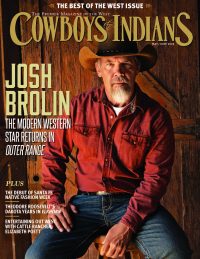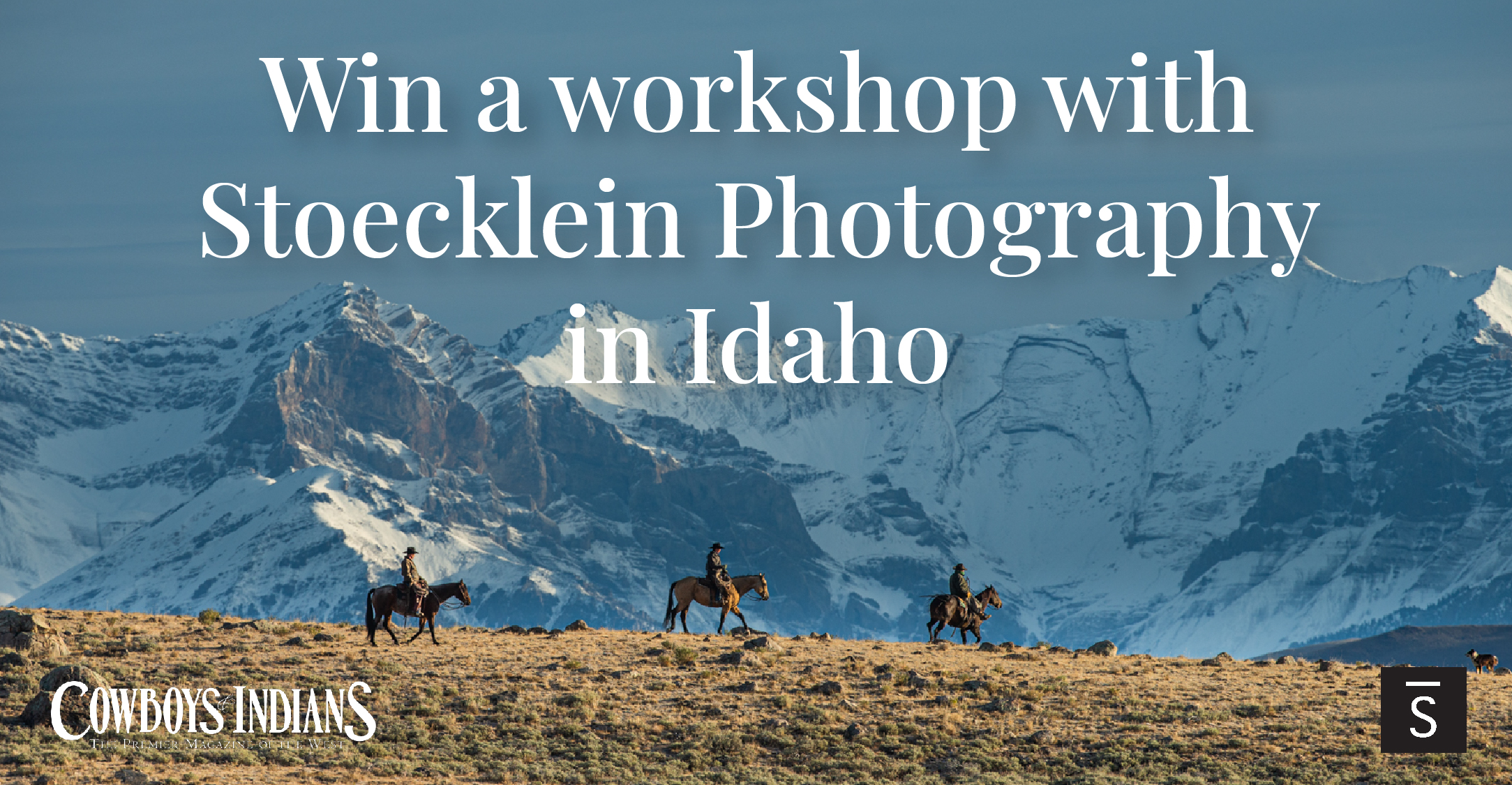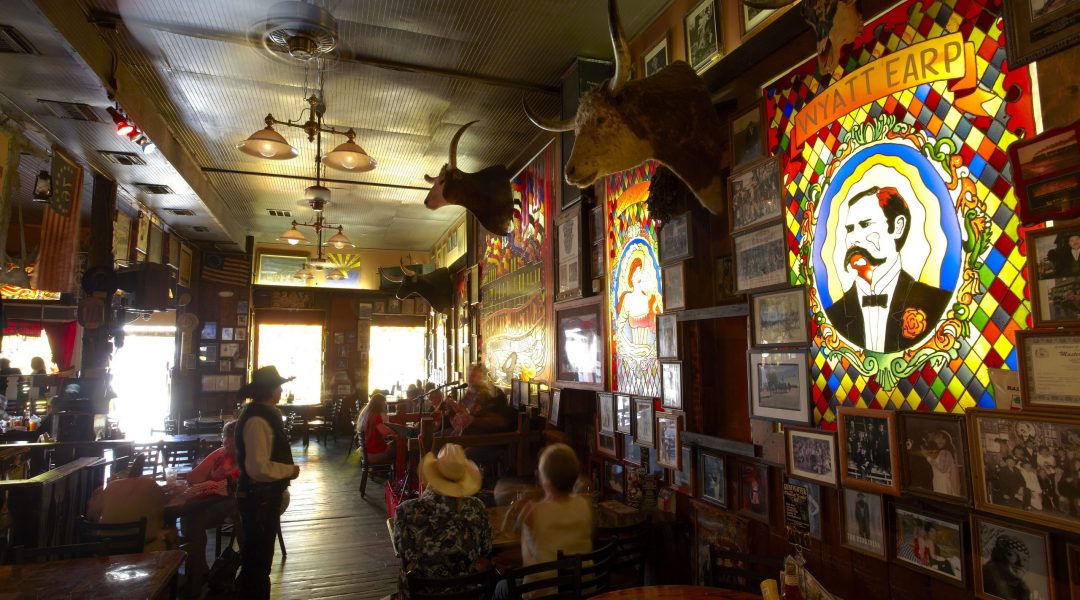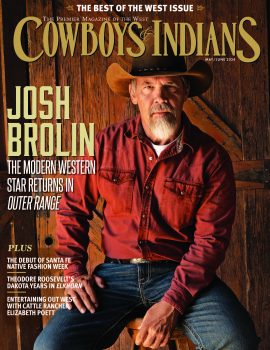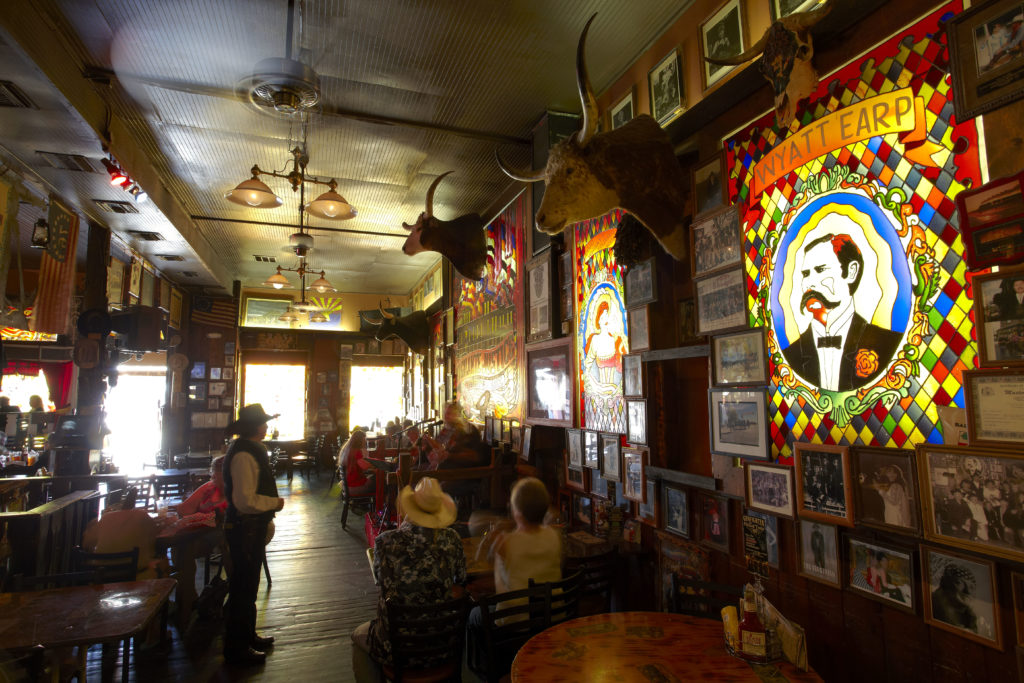
Tombstone is one of the seven iconic Western towns featured in our 2017 Best of the West issue.
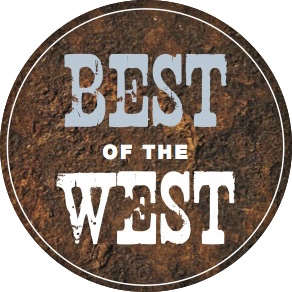 “The only rock you’ll find out there will be your own tombstone.”
“The only rock you’ll find out there will be your own tombstone.”
As the story goes, this was the bon voyage that prospecting hopeful Ed Schieffelin got from his U.S. Army scouting buddies at Camp Huachuca after laying out his plan to venture deeper west into Apache-riddled Arizona Territory in search of giant silver deposits just waiting to be claimed by the right crazy guy.
After months of fruitless searching, Schieffelin’s resolve would win out. Filing his first mining claim on September 21, 1877, he would dub his stake “Tombstone.” The eponymous town would arrive by 1879, swiftly sprouting to 10,000 residents with a Grand Hotel, an opera house, a bowling alley, and a Wine House stocked with European imports.
“Tombstone, back in the day, was not this crazy, wild, and dangerous place everyone pictures, but actually a very modern, sophisticated, and massively wealthy town,” says official town historian Don Taylor, who notes that by the early 1880s there was also a tennis club here; five ice cream parlors; fresh seafood delivered daily from Baja, California; and a respectable baseball club. “There have been at least 27 movies made about Tombstone, Wyatt Earp, and the Gunfight at the O.K. Corral,” Taylor adds, “and all of them have gotten the place wrong.”
Several generations and many billion dollars (by modern estimates) of harvested silver later, today’s Tombstone (population 1,300) welcomes about half a million annual tourists. Most of them aren’t coming to hear about the old tennis courts and late 19th-century baseball scores, but to set foot on the soil that hosted some of the biggest names in Old West lore and its most Hollywood-ized gun battle.
The 24-second, 30-bullet ordeal on October 26, 1881, between the Earp boys, Doc Holliday, and the McLaury-Clanton gang in a vacant lot near (but not actually at) the O.K. Corral left three men dead, three wounded, and an unscathed deputy sheriff Wyatt Earp primed for future 20th-century rebranding.
The real Wyatt likely wouldn’t recognize the Kurt Russell and Kevin Costner he’s become, but no matter. This is still Tombstone, in its satisfying blend of authentic Wild West history with a dime-novel chaser — and the man was here all right. Wander along the wood plank sidewalks of the National Historic District. Browse the shops, saloons, and theaters of Allen and Toughnut streets. Take in that mandatory gunslinger reenactment. And stand underneath a world-record-size rose tree that confirms what we’ve always suspected: Flowers outlast bullets.
“It’s still about the only place you can really experience the Old West this close to the way it really was,” Taylor says. “In Tombstone, you can walk where those legendary folks walked, talked, ate, drank, counted their money — and, yeah, occasionally drew their guns.”
START HERE
“For the comprehensive history of the town, your first stop should be the Tombstone Courthouse State Historic Park,” Don Taylor says. “It’s the original 50,000-brick building, built in 1882, and still such an integral park of Tombstone.” The former judicial quarters, sheriff’s office, and jail is now a museum filled with historical exhibits, vintage Tombstone relics, and a sobering gallows replica. For more memorabilia, including personal items of the Earps, broaden the local history lesson at Tombstone Western Heritage Museum.
PAY RESPECT
The town’s original cemetery, Boothill Graveyard, purportedly got its name because several of its inhabitants were shot dead with their boots still on. The interred in these rows of refurbished graves include O.K. Corral casualties and other victims of Tombstone-esque circumstance — including a wrongly accused horse thief hanged by mistake in 1882 and epitaphed accordingly: “He was right, we was wrong, but we strung him up and now he’s gone.”
DON’T MISS
If there’s a single room that conveys the spirit of 1880s Tombstone, it’s the impressively preserved interior of the Bird Cage Theatre, which enjoyed a brief but storied run from 1881 to 1889. Take a self-guided tour through what’s been called the largest opera house of its day between El Paso, Texas, and San Francisco — still pretty much how it looked in full swing.
STAND (APPROXIMATELY) WHERE THEY STOOD
Of course you’re going to visit the O.K. Corral Historic Complex, peruse its five museums, and pay four bucks to witness a live gunfight reenactment, held several times daily. And you may even be smarter for it. “The man doing the gunfight show there is also a historian, so it’s an accurate show and you’ll get the real story,” Taylor says.
STOP AND SMELL THE ROSES
Home to one of Tombstone’s oldest families, the Rose Tree Museum’s biggest exhibit (by far) is blooming in the backyard. The world’s largest rosebush — a 9,000-square-foot Lady Banksia with a 12-foot-diameter trunk — was a sapling gift sent from Scotland when it was planted here in 1885. Now it’s a fragrantly surreal site to behold and a Guinness World Record holder.
PARTY LIKE IT’S 1881
Memorial Day weekend brings Wyatt Earp Days (this year, May 27 – 29), with historical reenactments and one of Arizona’s last remaining 1880s fashion shows on Historic Allen Street. The cowboy-strutting three-day street fest Helldorado Days, on the third weekend of October, remains the town’s oldest, biggest event since 1929.
More info: tombstonechamber.com



